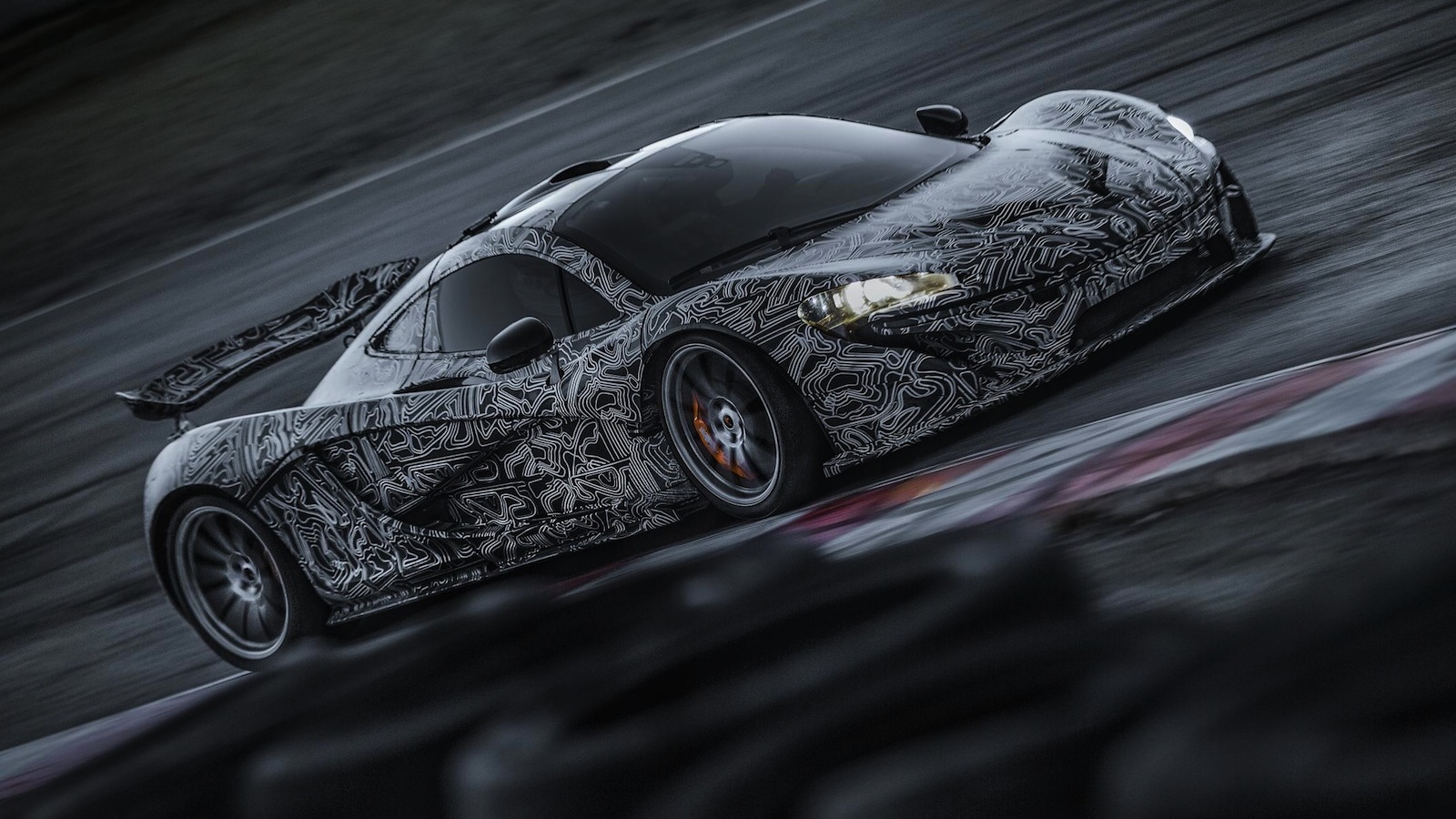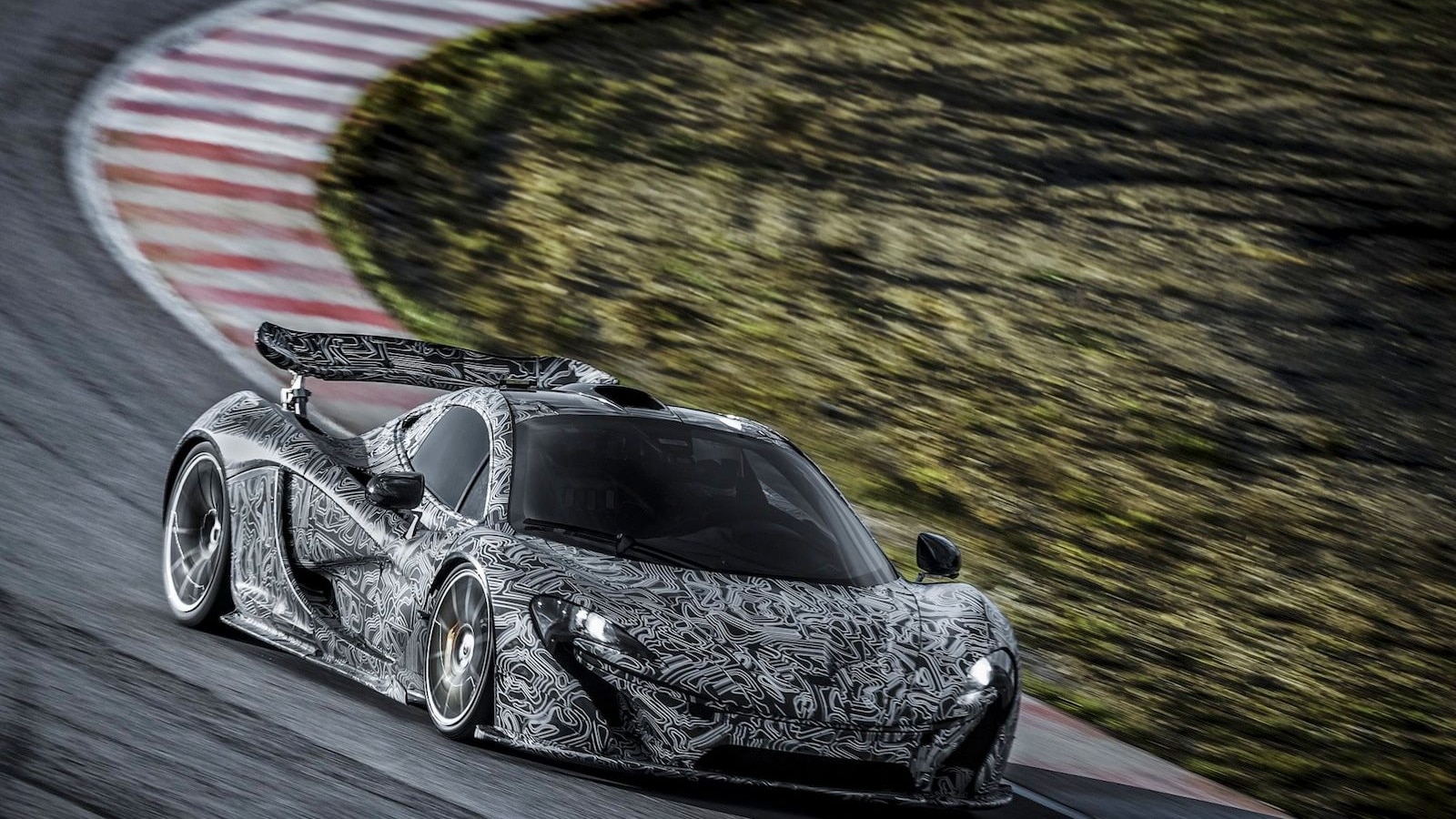McLaren’s design goal for the P1 was both simple and ambitious: to build the best driver’s car in the world, for both road and track use. That’s a tall order, as it will stack the P1 up against cars like the Pagani Huayra and the Koenigsegg Agera R, both of which are also built without compromise.
The ace up McLaren’s sleeve, however, is its 50-years of experience designing winning race cars, and the P1 is expected to come to market with a wide array of cutting-edge race car technology.
While powertrain specifications have yet to be released, it’s believed the P1 will benefit from a Kinetic Energy Recovery System (KERS), as used on Formula One cars to provide supplemental horsepower. Word is that the P1 will ultimately produce some 800 horsepower from a variant of its twin-turbo 3.8-liter V8, aided by an electric motor.
As in Formula One car design, aerodynamics are a critical component of the P1’s design. The car will sport an active rear wing that automatically adjusts to increase downforce as needed. It will benefit from a Drag Reduction System (DRS), too, to increase straight-line speed.
Up front, flaps deploy ahead of the front wheels to direct airflow and maximize downforce (or minimize drag) as needed. The controversial shape of the P1 is said to be dictated by aerodynamics, with every line, curve and angle having a functional component instead of just a stylistic one.
The P1 will use what McLaren is calling a “MonoCage” carbon fiber structure, which creates a strong but light safety cell around the cabin. The MonoCell also has an active aerodynamic role, directing air though a roof intake into the engine.
As this latest P1 video shows, testing of McLaren’s latest road-going supercar is well underway. Though wrapped in camouflage vinyl, we can clearly see the car’s now-familiar shape, and it looks like some of the more aggressive styling elements have been dialed back. The side gills, for example, seem far less pronounced on this test mule.
McLaren is working with partners including Akebono, Pirelli and Mobil 1 on the P1’s development, and we expect to see an updated version of the car appearing at the Geneva Motor Show on March 5. Given the brand’s legacy, we can’t wait to see what kind of performance numbers the P1 will ultimately put down.


